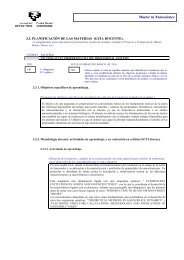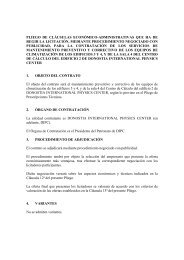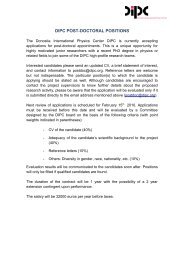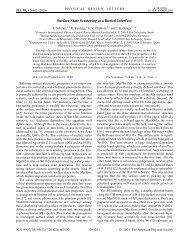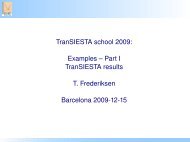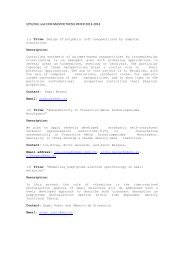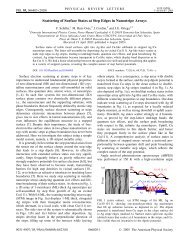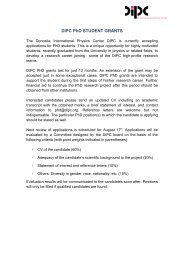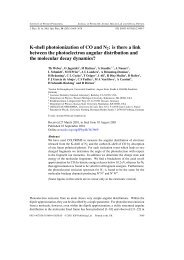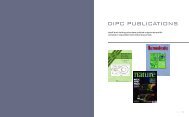Complete report - Donostia International Physics Center - Euskal ...
Complete report - Donostia International Physics Center - Euskal ...
Complete report - Donostia International Physics Center - Euskal ...
You also want an ePaper? Increase the reach of your titles
YUMPU automatically turns print PDFs into web optimized ePapers that Google loves.
2011 DIPC Highlight<br />
Atomic-scale engineering of<br />
electrodes for single-molecule<br />
contacts<br />
G. Schull, T. Frederiksen, A. Arnau, D. Sanchez-Portal, and R. Berndt<br />
Nature Nanotechnology 6, 23–27 (2011)<br />
Contacts between a single molecule and a metal electrode can be good or bad depending on<br />
the number of metal atoms that are in direct contact with the molecule.<br />
One of the most challenging questions in novel molecular electronics is the fabrication of atomic-scale<br />
contacts to single molecules. This requires a precise and detailed characterization of the current flow in<br />
extremely small electrical circuits, so small that their components are individual atoms and molecules. It<br />
is precisely the small dimension of the system, typically in the nanometer range, that makes the solution<br />
difficult. In particular, for a junction formed by a single molecule the number of atoms making the contact,<br />
as well as their positions, are expected to be crucial parameters for its ability to conduct electrical currents.<br />
So far, there have not been any experiments where these variables have been controlled with sufficiently<br />
high precision.<br />
Thanks to a collaboration between scientists in San Sebastian and Kiel (Germany) it is now been proven<br />
possible to determine and control the number of atoms making contact between a single C60 molecule<br />
and a copper metal electrode while the current flow through the junction is registered, as shown in the<br />
figure. In this way, these scientists have been able to quantify the changes in the electrical conductance<br />
across the molecular junction (metal/molecule/metal) as a function of the contact area between the molecule<br />
and the metallic electrodes. In brief, by changing the number of atoms in the contact one by one,<br />
it was found that there is a change from low (bad contact) to high (good contact) conductance. In the<br />
bad contact regime, the current flow is limited by the contact area, while in good contact regime the current<br />
flow is limited by scattering at the molecule.<br />
Artistic representation of a scanning tunneling microscope (STM) tip with a C60 molecule at its apex suspended<br />
over a copper surface which has been manipulated at the atomic scale to accommodate clusters with different<br />
number of copper atoms. The copper clusters are used to make different contacts to the molecule by gently approaching<br />
the tip to each of them. The blue color surface in the lower part of the figure shows a real STM image<br />
of the metal surface with different number of copper atoms on top of it as indicated by the orange spheres<br />
[Image by G. Schull].<br />
Molecular contacts at hand.<br />
54 DIPC 10/11<br />
DIPC 10/11 55



